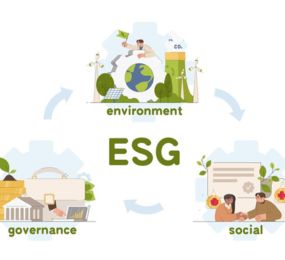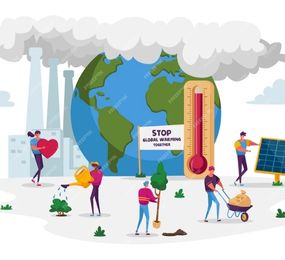World ESG and Climate: Aligning Global Action with Corporate Responsibility
The climate crisis is no longer a distant issue—it’s a defining challenge of our time. As the world grapples with rising temperatures, extreme weather events, and growing environmental degradation, governments, businesses, and communities are looking for frameworks that can guide meaningful change. That’s where ESG—Environmental, Social, and Governance—comes into focus.
Once viewed as a niche set of corporate principles, ESG has rapidly become central to global climate strategy. Investors demand it. Regulators are tightening standards. Consumers are paying attention. But what does ESG really mean in the context of climate, and how can it help move the needle?
ESG: A Global Language for Sustainability
At its core, ESG is about how companies operate—not just for profit, but with accountability to people and the planet.
1.Environmental concerns focus on how a company impacts the natural world—through emissions, resource use, and energy efficiency.
2.Social factors include labor practices, community relations, and how companies contribute to (or detract from) social equity.
3.Governance refers to how decisions are made: Are leaders transparent? Are risks managed responsibly? Are shareholders treated fairly?
Each element plays a role in addressing climate change. Together, they help hold companies accountable for their footprint, while also encouraging resilience and long-term thinking.
ESG and Climate Change: A Two-Way Relationship
Climate change affects every part of the global economy—and ESG is increasingly seen as the framework to respond. Here's how the relationship works in practice:
Carbon Disclosure and Net-Zero Targets: Investors now expect companies to measure and report their greenhouse gas emissions. Many are also setting net-zero targets, pledging to reduce emissions across supply chains.
Risk Management: Floods, wildfires, and droughts pose real financial risks. ESG-minded companies are more likely to plan for these disruptions and build climate resilience into their operations.
Sustainable Finance: The rise of green bonds, impact investing, and ESG-labeled funds is channeling trillions of dollars toward projects that support climate goals.
Supply Chain Responsibility: Companies are increasingly judged not just by their own emissions, but by those of their suppliers. ESG encourages transparency across the entire chain.
Global Momentum and Policy Shifts
Countries around the world are moving toward mandatory ESG disclosures—especially for climate-related risks.
Europe is leading the charge with the Corporate Sustainability Reporting Directive (CSRD), requiring thousands of companies to report detailed ESG metrics.
The U.S. Securities and Exchange Commission (SEC) is working on rules to standardize climate risk disclosures.
Asia-Pacific markets are also evolving quickly, with regulators in Japan, Singapore, and Hong Kong pushing for more transparency and ESG integration.
These changes are forcing businesses to take ESG seriously—not just as a branding tool, but as a fundamental part of how they operate and report performance.
Challenges and Criticisms
Despite the momentum, ESG is not without criticism. Some argue it can be vague or used for "greenwashing"—when companies overstate their sustainability credentials. Others worry that ESG ratings lack consistency across agencies, making it hard to compare companies meaningfully.
There’s also debate around whether ESG truly delivers financial outperformance or simply reduces risk. Still, the broader trend is clear: the market is moving toward sustainability, and ESG is the vehicle.
The Path Ahead
For ESG to fulfill its potential in the climate fight, three things are needed:
1.Standardization: Clear, consistent ESG standards will help prevent greenwashing and boost accountability.
2.Data and Transparency: Reliable data is critical for assessing impact and risk.
3.Leadership: Companies that lead on ESG aren't just reacting to regulation—they’re shaping the future.
Conclusion
As climate change accelerates, the pressure to act responsibly is rising for everyone—especially for businesses. ESG offers a structure to help navigate this new landscape. It’s not perfect, but it’s evolving fast. And when implemented with sincerity and rigor, ESG can help bridge the gap between corporate ambition and the world’s climate needs.
In the years ahead, the question won’t be whether ESG matters—but how well we use it to drive real, lasting change.
Learn more on our website: https://www.leadventgrp.com/events/2nd-annual-world-esg-and-climate-summit/details
For more information and group participation, contact us: [email protected] .
Leadvent Group - Industry Leading Events for Business Leaders!
www.leadventgrp.com | [email protected]
















